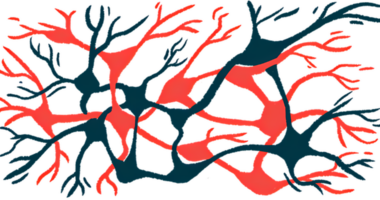Electroacupuncture reduced cellular signs of Parkinson’s in mouse model
Treatment reduced SGLT1 protein, easing neuroinflammation

Electroacupuncture reduced cellular hallmarks of Parkinson’s disease, including alpha-synuclein accumulation and nerve cell degeneration, in a mouse model of the disease.
That’s according to the findings from a study that also found the treatment, a type of acupuncture where small needles inserted at specific points in the body are stimulated with a low electric current, eased neuroinflammation by reducing levels of sodium-glucose transporter type 1 (SGLT1), a protein important for glucose metabolism.
The study demonstrated that electroacupuncture “has potential beneficial effects on the medical treatment of [Parkinson’s disease]” and its “findings suggest that SGLT1 plays an important role in [Parkinson’s disease] and that targeting SGLT1 may represent a potential strategy,” the researchers wrote.
The study, “Electroacupuncture regulates glucose metabolism by inhibiting SGLT1 levels, inhibiting microglial polarization, and alleviating Parkinson’s disease,” was published in Experiment Gerontology.
Parkinson’s is a neurodegenerative disease caused by the progressive loss of dopaminergic neurons, nerve cells responsible for producing the chemical signaling molecule dopamine.
What triggers dopaminergic neuron dysfunction isn’t fully known, but several factors have been implicated, such as the accumulation of toxic protein aggregates — most notably alpha-synuclein — and the presence of neuroinflammation, or brain inflammation.
Electroacupuncture has been shown to be well tolerated and to improve motor function in people with Parkinson’s disease, when used as an adjunctive therapy to standard medications.
Effect of electroacupuncture on Parkinson’s symptoms
Here, researchers used a Parkinson’s mouse model to explore the specific mechanisms by which electroacupuncture eases Parkinson’s symptoms, specifically, whether this complementary therapy could reduce the inflammatory activation of the brain’s immune cells, called microglia, which contributes to neuronal damage and death.
The researchers hypothesized that electroacupuncture could inhibit microglia activation by reducing SGLT1, a protein that regulates glucose metabolism in the brain, which is critical for neuronal health. Glucose metabolism dysfunction has been linked with neurodegeneration in Parkinson’s disease.
The team used a mouse model that showed the accumulation of alpha-synuclein inside dopaminergic neurons displayed neuronal loss alongside increased activation of microglia and elevated inflammatory marker levels.
SGLT1 promoted microglia activation via the PI3K/AKT pathway, a key molecular mechanism in neuroinflammation. Reducing SGLT1 levels skewed microglia toward an anti-inflammatory profile.
Mice that received electroacupuncture once a day for 14 days had significantly lower alpha-synuclein levels and more dopaminergic neurons than untreated mice. The treatment also reduced levels of certain inflammatory markers.
Electroacupuncture also increased the transient receptor potential channel 1 (TRPC1), a protein that helps regulate calcium levels inside the cells, consequently increasing calcium in the brain of Parkinson’s mice. This effect was associated with a reduction in SGLT1 levels.
Researchers proposed electroacupuncture eased Parkinson’s signs by increasing the activation of the TRPC1/calcium pathway, decreasing SGLT1 levels, and inhibiting microglial activation into a pro-inflammatory state. The treatment’s efficacy and safety should be evaluated in future clinical trials, they said.
“[O]ur research results revealed that EA [electroacupuncture] treatment exhibits significant efficacy in alleviating PD [Parkinson’s disease] in a mouse model, prominently improving neuronal damage and glucose metabolism dysfunction in PD mice and alleviating the progression of PD. This has potential beneficial effects on the medical treatment of PD,” the researchers wrote.







